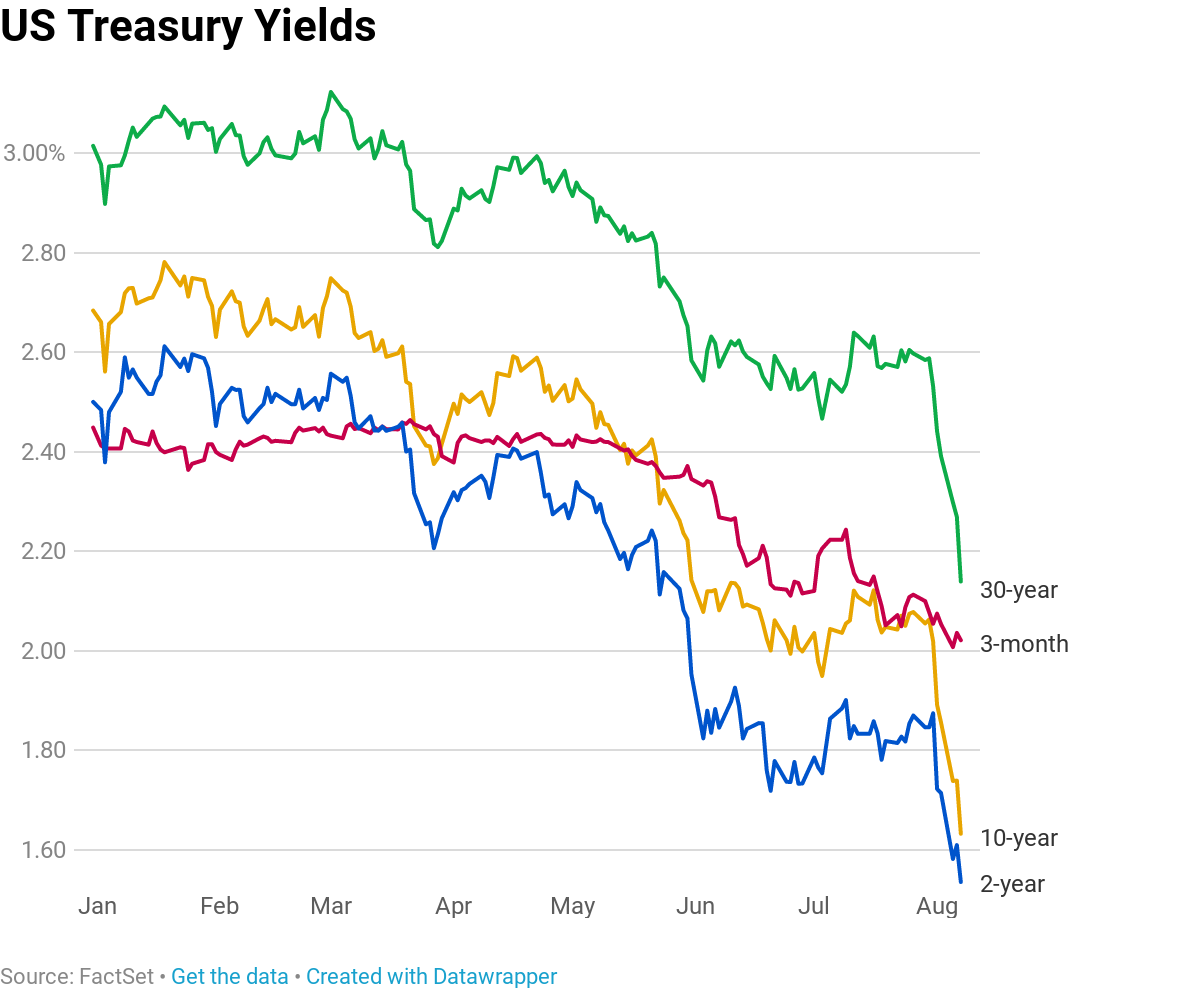

The yield on the benchmark 10-year Treasury note on Tuesday threatened to break below that of the 2-year U.S. note as investors rush toward safe haven assets amid growth global growth concerns and in anticipation of key inflation data.
Traders were also watching the 30-year bond yield, which neared an all-time low.
The traditionally watched 2-year and 10-year Treasury curve is just a few basis points away from inversion, a phenomenon heralded by many as a recession indicator. Investors often give the spread between the 10-year and the 2-year special attention because inversions of that part of the curve have preceded every recession over the past 40 years.
At around 7:32 a.m. ET, the yield on the benchmark 10-year Treasury note was little changed at around 1.642%, just above that on the 2-year security at 1.589%. The yield on the 30-year Treasury bond traded a hair above its all-time low at 2.116%. Yields fall as bond prices rise.
.1565696928589.png)
Long-term yields have plummeted in August as concerns surrounding trade developments and GDP growth — coupled with expectations for lackluster inflation and more aggressive central bank action — have sent nervous traders in search of safer investments.
The yield on the 10-year Treasury note — an important rate banks use when setting mortgage rates and other lending — has fallen a steep 35 basis points this month.
Critical to the direction of Treasury trading on Tuesday will be the Labor Department’s monthly Consumer Price Index (CPI) and core CPI data for July, set for release at 8:30 a.m. ET. Investors tend to buy Treasurys in response to weak inflation data because prices erode the purchasing power of bonds’ fixed payments.
Core CPI, which exclude volatile food and energy components, is expected to show that consumer inflation rose 0.2% in July, or 2.1% year over year.
Market participants are also keeping an eye on pro-Democracy activism in Asia after protesters forced Hong Kong’s main airport to cancel all flights on Monday. The protests first started in June to rally against an extradition bill to mainland China and have since become a larger movement about political freedom and democracy.
Meanwhile, a possible return to interventionist policies in Buenos Aires roiled the Argentine market in the previous session. It came after President Mauricio Macri, the business friendly center-right incumbent, lost by a far bigger margin than expected in presidential primaries.
Alongside worries about the prospect of a drawn-out U.S.-China trade war, these fears drove investors away from riskier assets.
Safe-haven harbors — such as bonds, gold and the Japanese yen — are typically sought to limit one’s exposure to losses in the event of a sharp market downturn.












